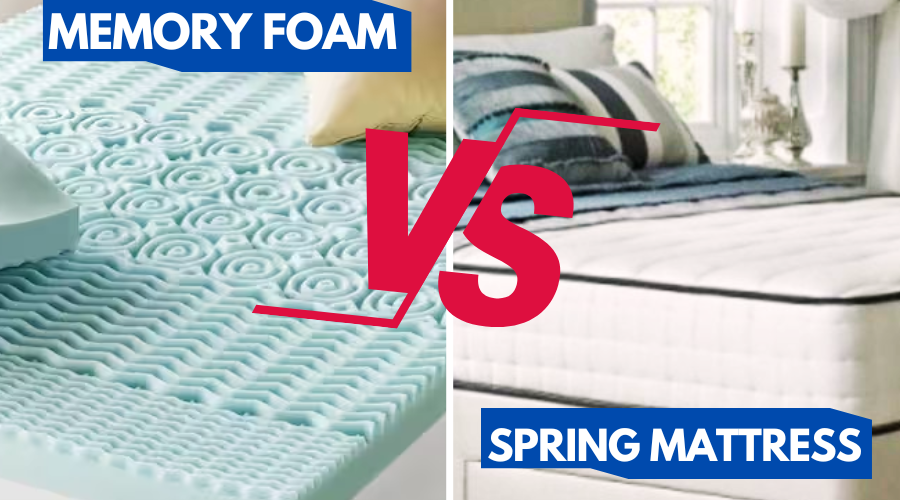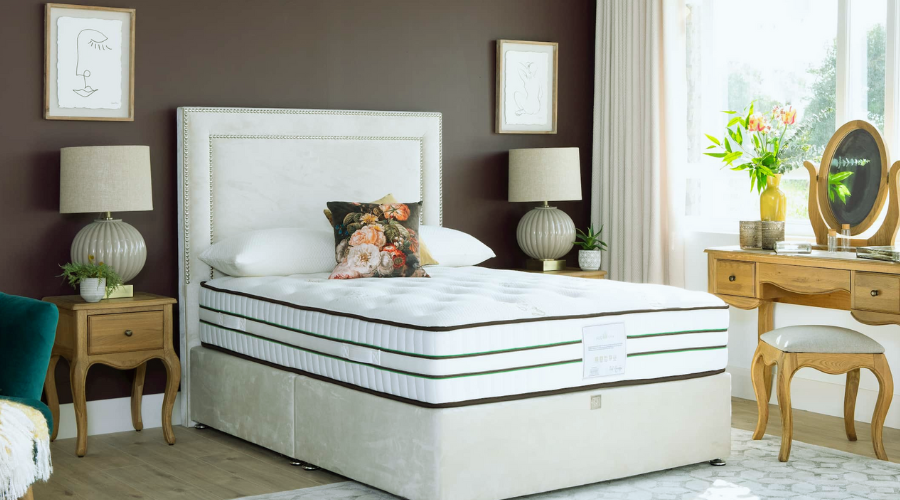
Finding the ideal mattress has become quite complex nowadays. The two leading contenders in the market are memory foam and spring mattresses. Both memory foam and pocket spring mattresses have a unique set of advantages and disadvantages that are supported by research. Let's solve this problem based on their benefits and drawbacks.
Memory foam comprises viscoelastic materials that respond to body heat due to their viscoelastic properties. When exposed to body heat, these materials become more pliable, allowing them to contour to the sleeper's body shape. This adaptive feature. It is supported by the material's ability to soften with warmth, providing a customized and supportive sleeping surface.
The scientific principle behind memory foam's pressure-relieving capabilities lies in its ability to distribute weight evenly. The material conforms to the body's natural curves, reducing pressure points by spreading the load across a larger surface area. This can be particularly beneficial for those with joint or muscle pain, as it minimizes stress in specific areas.
The dense composition of memory foam contributes to its excellent motion isolation. The material absorbs and dampens the energy generated by movement, preventing disturbances from transferring across the mattress surface and limiting disturbances caused by a restless sleeping partner, contributing to a more stable sleep environment.
Scientifically, memory foam's density can contribute to heat retention. The close conformity to the body may hinder optimal airflow, potentially causing the mattress to sleep warmer. This can be a concern for individuals sensitive to temperature changes during sleep.
The initial off-gassing experience with memory foam mattresses results from manufacturing. When the mattress is first unwrapped, volatile organic compounds (VOCs) are released, but these emissions are generally harmless and diminish over time.
Combining scientific precision with a touch of artful comfort, pocket spring mattresses showcase a resilient structure, leveraging the independent movement of each coil. This scientific design enables the mattress to dynamically respond to changing pressures, crafting a buoyant surface that adeptly adapts to the sleeper's every movement. Picture a mattress that dances with your twists and turns, embracing you with a harmonious bounce—pocket spring mattresses excel in delivering this lively support, transforming sleep into an artful experience.
Because of their open construction, pocket spring mattresses maximize ventilation, essential for controlling body temperature as you sleep and encouraging a calmer, more comfortable night's sleep. This scientific design seamlessly blends with artful comfort, creating a mattress that breathes and offers a refreshing and rejuvenating sleep sanctuary.

Pocket spring mattresses showcase durability rooted in the resilience of individual coils. Scientifically, their independent movement mitigates wear, and proper rotation extends the mattress's lifespan. An artful waltz with longevity ensures a durable and enduring embrace for your nightly repose.
The independent movement of each coil creates a stable sleep environment, reducing disturbances from a partner's restlessness. Picture a mattress orchestrating a serene symphony of stillness – pocket spring mattresses achieve this tranquility, containing your partner's movements for uninterrupted and peaceful sleep.
Pocket spring mattresses offer stability and even scientific support. Individual coils adapt to the body's contours, ensuring uniform weight distribution and mitigating the risk of sagging or uneven wear over time. Envelop yourself in the assurance of consistent support every night as pocket spring mattresses, with their artful blend of science and comfort, provide a stable foundation for restful sleep, creating a sanctuary where your body finds the perfect balance.
• This common question addresses the suitability of mattress types in alleviating back pain. Pocket spring mattresses usually guide individuals seeking relief from back discomfort, providing insights into the support and pressure relief aspects.
2. Do memory foam mattresses sleep hot, and how can this be mitigated?
• Many consumers express concerns about the potential heat retention in memory foam mattresses. Explaining the scientific reasons behind heat retention in memory foam, it is obvious to choose breathable bedding to mitigate warmth.
3. How often should I rotate my pocket spring mattress for optimal longevity?
Rotate your pocket spring mattress every 3 to 6 months for optimal longevity. This ensures even wear on individual coils, maintaining support and minimizing the risk of sagging over time.
The ideal choice combines personal preferences and scientific understanding in the timeless debate of memory foam vs. pocket spring mattresses. The art and science behind these mattresses offer insights into their unique features, allowing you to decide based on your sleep needs.